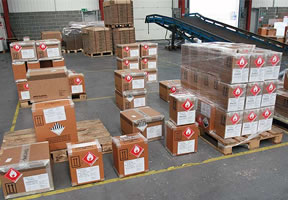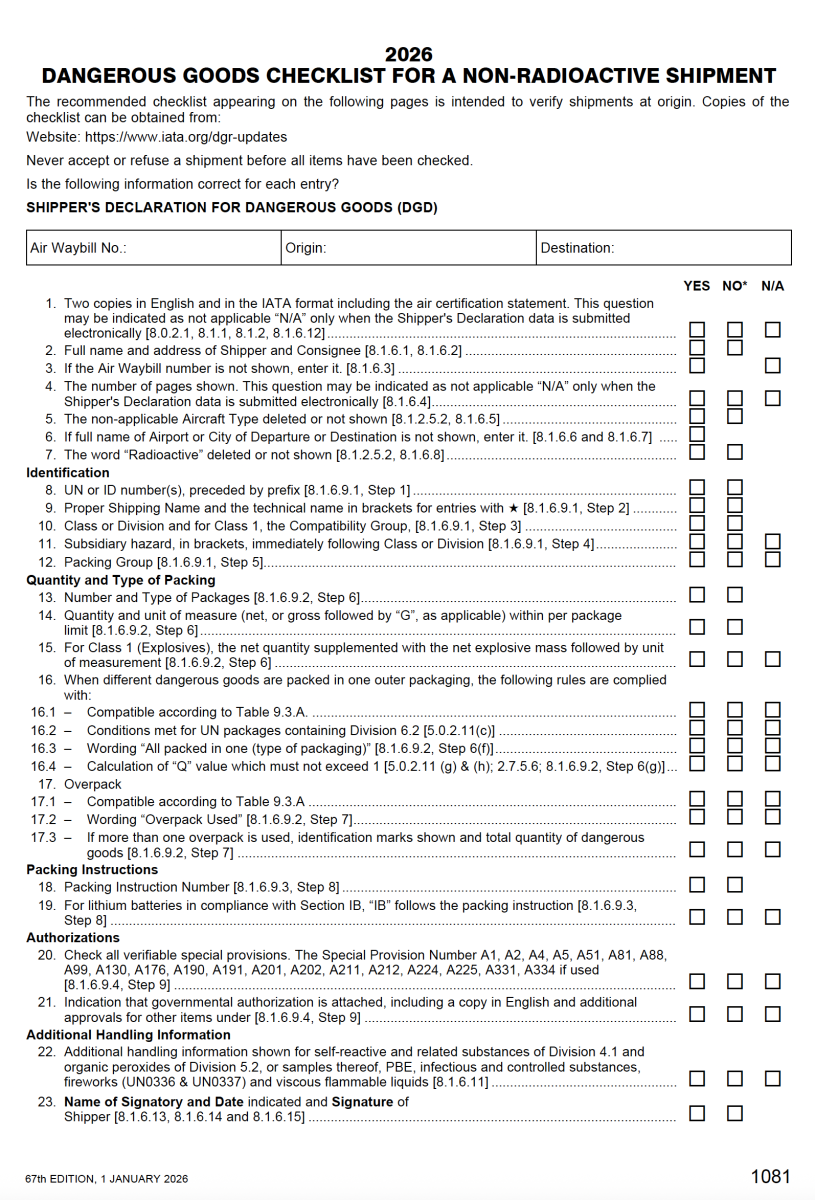MODULE 9 || Operator Acceptance and Handling Procedures
Note: You must refer to the Operator’s Dangerous Goods Manual and/or specific Dangerous Goods documentation for any standard operating procedures (SOPs). It is mandatory for operators to include the transport of dangerous goods, including lithium batteries and cells as cargo, in their safety management system (SMS) and in their specific safety risk assessment on the transport of items in the cargo compartment.
Acceptance of dangerous goods by the operatorOperators must use a check sheet whenever accepting dangerous goods for transport. If anything is found to be incorrect and not in accordance with the IATA DGR it must be rejected and returned to the shipper. An explanation of why the package was rejected would be included on the “Acceptance Checklist”. The person accepting the dangerous goods must be dangerous goods acceptance trained Note: This Dangerous Goods Course does not allow you to accept dangerous goods for air transport! Remember: As mentioned in Module 3, cargo / freight staff are one of the final filters ensuring hidden dangerous goods do not end up up on the aircraft. Cargo staff should use all five senses in identifying hidden or mis-declared dangerous goods. Some ways to achieve this goal are as follows:
|
Click here to download a PDF version containing both pages of the checklist |
Handling of dangerous goods and cargo
Operators must ensure that all dangerous goods packages are handled with care.
All dangerous goods packages, overpacks and unit load devices (ULDs) must be stored and loaded correctly according to the IATA DGR and the Operator’s Dangerous Goods Manual. All persons involved in the handling and loading of aircraft must inspect dangerous good packaging to ensure that they are not leaking or damaged.
All accidents or incidents must be reported to:
- within two working days.
- The operator’s safety department as soon as practicable.
Note: Please refer to the Operator’s Dangerous Goods Manual for incident and accident reporting procedures.
Storage of dangerous goods
|
When storing Dangerous Goods, the following needs to be considered:
|
 |
Replacement of labels
After acceptance, should a mark or label be lost, detached or illegible, it is permissible for the operator's staff to replace them. The replacement of any marks or labels should be in accordance with the information provided on the Shipper's Declaration for dangerous goods.
Please note: This requirement does not apply where the marks or labels are found to be missing or illegible at the time of acceptance.

